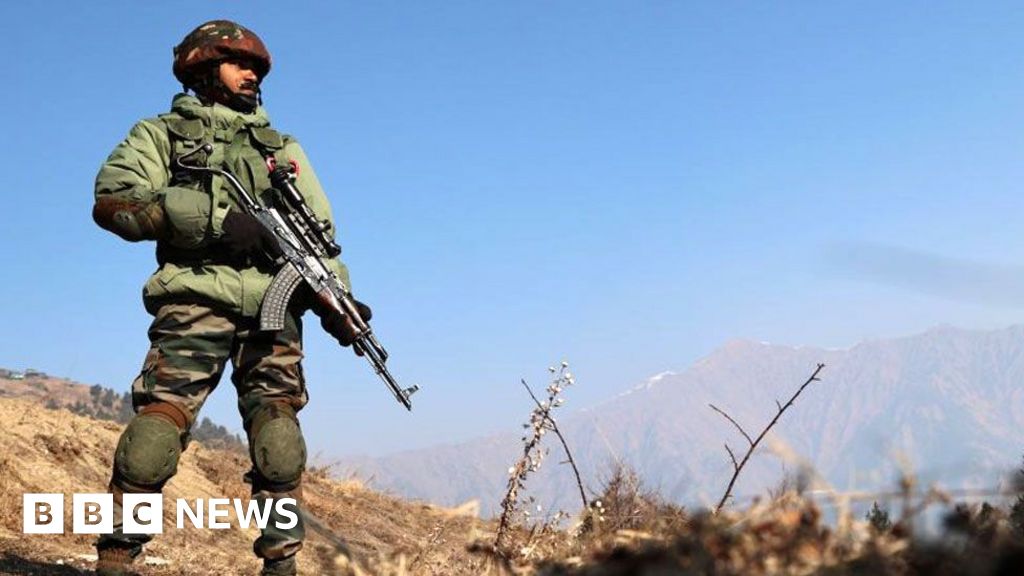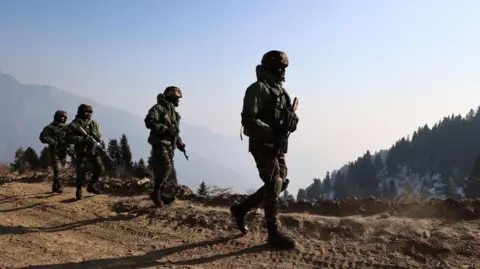 Getty Images
Getty ImagesOn 9 June, Indian-administered Jammu and Kashmir saw one of its deadliest attacks in years.
Nine Hindu pilgrims were killed and more than 30 people were injured after militants opened fire on a bus that was making its way to a shrine in the region.
The firing that took place in Reasi – one of 10 districts in Jammu – is among numerous attacks on the army and civilians in the region in recent months.
Violence is not new to the scenic region, but a recent trend has worried experts – the centre of militant activity seems to be shifting from Kashmir Valley to the relatively less-affected Jammu area.
The Himalayan region of Kashmir has long been a flashpoint between India and Pakistan. Since 1947, the nuclear-armed neighbours have fought two wars and a limited conflict over the Muslim-majority territory, which both claim but only partly control.
An armed insurgency against Delhi’s rule in the Indian-administered region since 1989 has claimed thousands of lives.
The Indian government says that violence has reduced since 2019, when it revoked a constitutional provision that gave the region special autonomy.
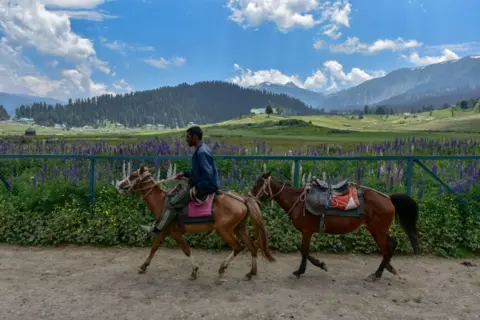 Getty Images
Getty ImagesBut there seems to be a sharp uptick in violence in recent months, particularly in Jammu, stoking fears of militancy returning to that region.
Since 2021, there have been 33 militant-related attacks in Jammu, according to official data. In 2024 alone, the region has seen eight attacks, in which 11 soldiers have been killed and 18 injured. Civilian deaths in Jammu in the first six months of this year were 12, the same number as the whole of 2023.
The attacks occurred in Rajouri, Poonch, Doda, Kathua, Udhampur, Reasi and other areas of the Jammu division. Like the Kashmir valley, Jammu too is near the Line of Control, the de facto border with Pakistan. Delhi has accused Islamabad of supplying militants with weapons, drugs, and money via drones. Pakistan has not officially responded to these allegations.
Experts say the recent spate of attacks in Jammu suggests that militant activity has spread deeper into the federal territory.
One reason, some say, could be the high concentration of security forces and intelligence activity in the valley, which may have forced militants to move southwards. Others think it is a deliberate attempt to divert the army’s attention from other strategic areas in Jammu and Kashmir.
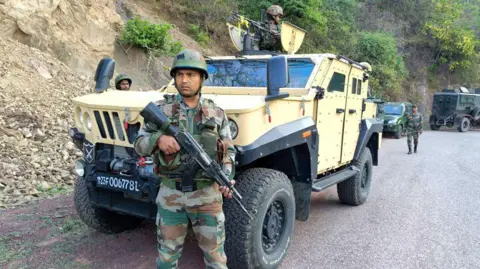 Getty Images
Getty ImagesSince the insurgency began, the valley has been the epicentre of the conflict. Militancy had spilled over into Jammu in the late 1990s, but the region has been relatively calm since 2002.
So, the rise in militant activity in Jammu since 2021 (two years after India scrapped the region’s special status) and the back-to-back strikes in the past few months have deeply unsettled the entire security apparatus in Jammu and Kashmir.
Reports indicate that militants, armed with sophisticated assault rifles and well-trained in jungle warfare, have been using the forests and treacherous terrain of Jammu to hide from the security forces.
The attacks took place in areas of the Jammu province where the terrain is tough and road connectivity is poor, making it hard for security forces to reach the spot on time.
Retired Colonel Bhuwanesh Thapa, father of a soldier who was killed in Doda last week, told reporters that his son had called him before leaving for the search operation and that his team had been preparing to undertake a six to seven-hour trek to reach the location.
Shesh Paul Vaid, a former police chief who had been involved in anti-insurgency operations in the valley, believes that the spike in militant attacks in Jammu is a ploy to “divert attention” from Kashmir.
He also attributes the spurt in violence to a “well-thought-out policy” by China and Pakistan to stretch out India’s armed forces.
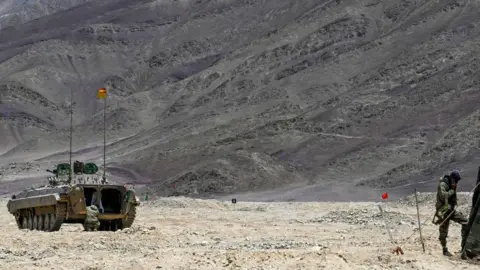 Getty Images
Getty ImagesLike Pakistan, China too shares a disputed border with India in the Himalayan region. Known as the Line of Actual Control (LAC), it falls close to Ladakh, a mountainous territory to the east of Jammu and Kashmir.
According to reports, India’s stand-off with China in the Ladakh region since 2020 has compelled it to send additional troops to the cold desert. These forces were reportedly pulled out from Jammu, leaving the region vulnerable to militant activities.
For long, India’s strategic community has feared the prospect of a two-front war along its northern and western borders. Experts believe that any military collusion between Pakistan and China will stretch India’s defences.
“The thinning of troops [in Jammu] is making an impact. The militants are taking advantage of it,” said Lt Gen Deependra Singh Hooda, a former military commander.
Lt Col Suneel Bartwal, an army spokesperson in Jammu, told the BBC that the army had been conducting a series of “joint and co-ordinated operations” with police to eliminate “foreign terrorists”. He added that a number of measures had been taken to enhance synergy between various security agencies in the region.
Some experts also point out that India’s intelligence network in Jammu is less developed than in Kashmir due to its relative calm and fewer incidents of violence since 2002.
Political analyst Zafar Choudhary says for the past three decades, counter-insurgency specialists have been stationed in Kashmir and not in Jammu.
“They [forces] have understood the terrain and topography of the Kashmir valley over the years, [but] not much of Jammu,” he says.
